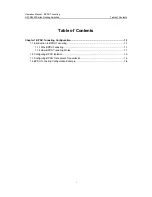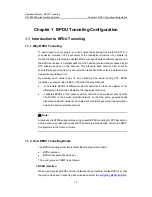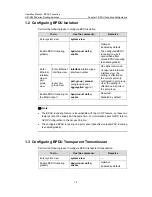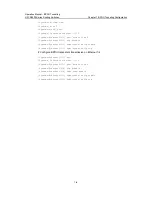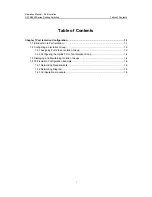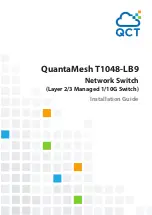
Operation Manual – QinQ
H3C S9500 Series Routing Switches
Chapter 1 QinQ Configuration
1-2
Figure 1-1
Single-tagged frame structure vs. double-tagged Ethernet frame structure
QinQ delivers these benefits:
z
Saving public network VLAN ID resources.
z
Enabling customers to plan their own private network VLAN IDs, without running
into conflicts with public network VLAN IDs.
z
Providing simple Layer 2 VPN solutions for small-sized MANs or Enterprise
networks.
1.1.2 Implementations of QinQ
For S9500 series switches, the QinQ feature is implemented through enabling the
basic QinQ feature on ports.
With the basic QinQ feature enabled on a port, when a frame arrives at the port, the port
will tag it with the port’s default VLAN tag, regardless of whether the frame is tagged or
untagged. If the received frame is already tagged, this frame becomes a double-tagged
frame; if it is an untagged frame, it is tagged with the port’s default VLAN tag.
1.1.3 Adjustable TPID Value of QinQ Frames
A VLAN tag uses the tag protocol identifier (TPID) field to identify the protocol type of
the tag. The value of this field, as defined in IEEE 802.1Q, is 0x8100.
Figure 1-2
shows the structure of a VLAN-tagged Ethernet frame defined in IEEE
802.1Q.





















